Key takeaways:
- Achieving work-life balance is about feeling fulfilled in both professional and personal areas, not dividing time equally.
- Effective time management, including prioritization and setting boundaries, enhances productivity and creativity in photography.
- Engaging in personal photography projects allows for creative growth and experimentation, while also rejuvenating passion.
- Sharing experiences and collaborating with others fosters community and can inspire new perspectives in photography.
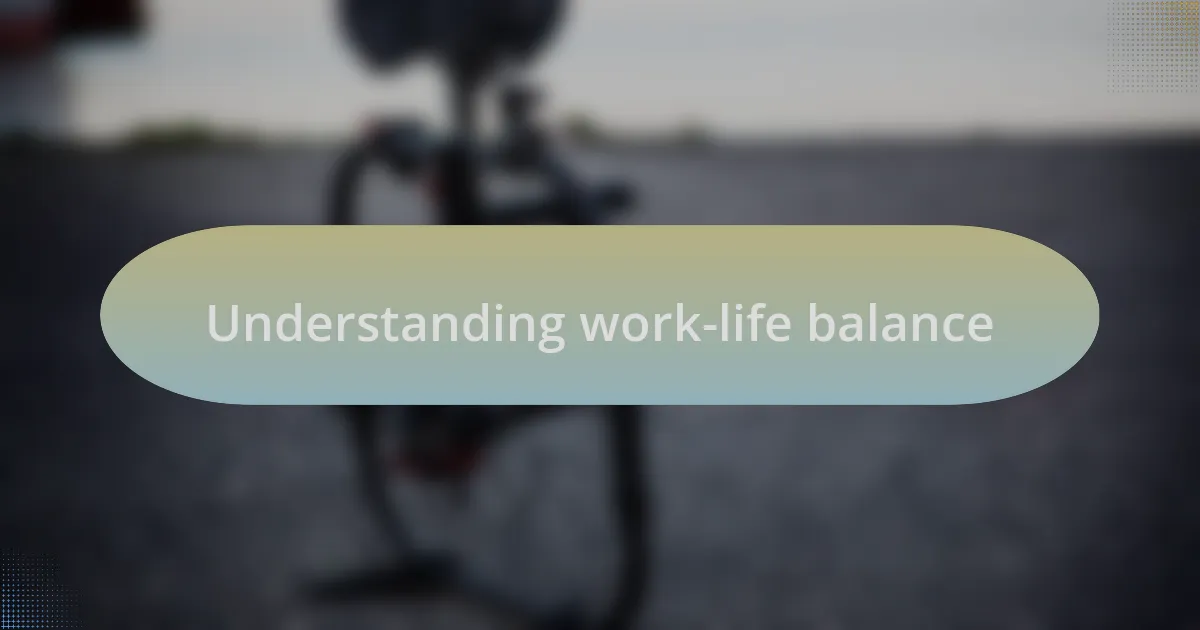
Understanding work-life balance
Work-life balance is like a dance; it requires rhythm and awareness. I remember when I first tried to juggle my photography projects and personal commitments. There were days when I felt overwhelmed, and others when I reveled in the joy of creativity without stress. The key realization for me was that balance doesn’t mean equal time spent on both sides; it’s about feeling fulfilled in each area.
Have you ever felt the pressure of deadlines looming while knowing you have a family event to attend? I certainly have. In those moments, it helped to set clear boundaries. For instance, I started designating specific hours for work and family, which allowed me to be fully present in both spheres. This practice didn’t just ease my stress; it transformed my interactions, making my time with loved ones much richer.
Achieving that balance is an ongoing journey. Sometimes, I find myself slipping back into the habit of letting work take over, but reminding myself of my core values brings me back. I often ask myself, “What brings me joy today?” It’s amazing how that simple question can shift my focus and help restore harmony in my life.
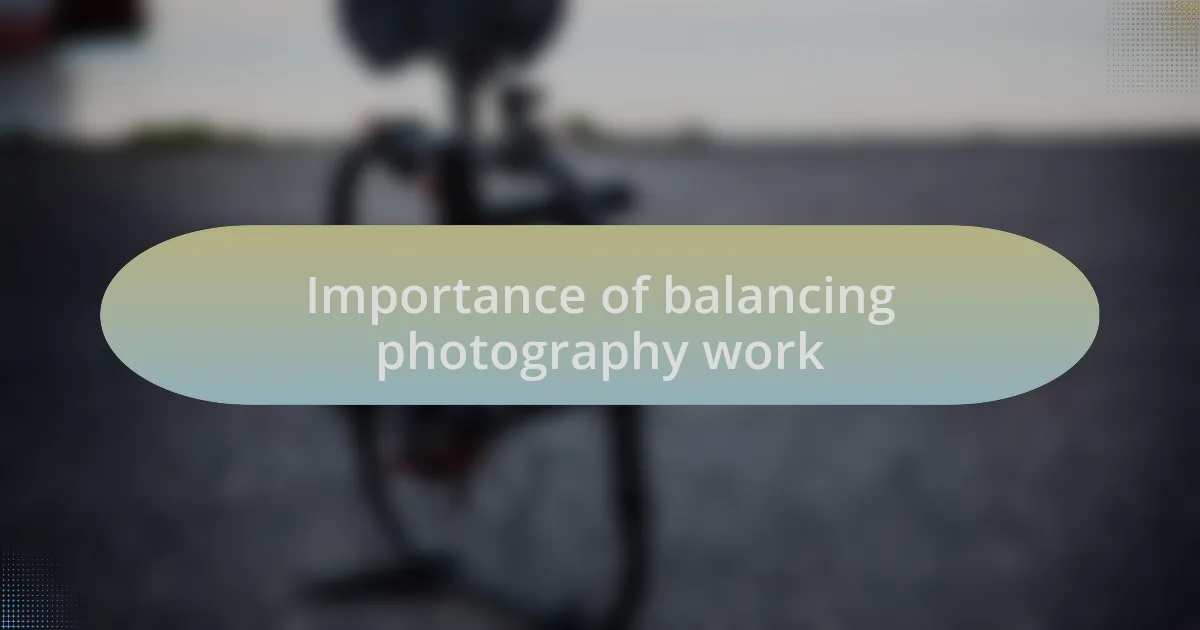
Importance of balancing photography work
Balancing photography work is essential for fostering creativity and sustaining passion. I recall a time when I dedicated countless hours to editing photos, only to feel completely drained. It dawned on me that taking breaks and stepping away from my camera refreshed my perspective, sparking new ideas. Have you ever found inspiration in an unexpected moment away from your usual routine? I certainly have, and it’s a reminder that creativity flourishes best in a balanced environment.
It’s also crucial for maintaining relationships with loved ones. When I immersed myself solely in professional photography, I noticed my family events became mere checkboxes on my calendar. I decided to consciously incorporate photography into our family outings, capturing candid moments that we could cherish together. This not only enriched my personal connections but also enhanced my professional work, blending joyful experiences with artistic expression.
Moreover, achieving balance leads to better mental health and reduces the risk of burnout. On days when I prioritized my mental well-being by practicing mindfulness or enjoying nature, I returned to my photography projects with renewed energy. Have you experienced this rejuvenating effect? For me, finding joy in both my personal life and professional work has proven that they don’t just coexist; they enhance one another in ways I never anticipated.
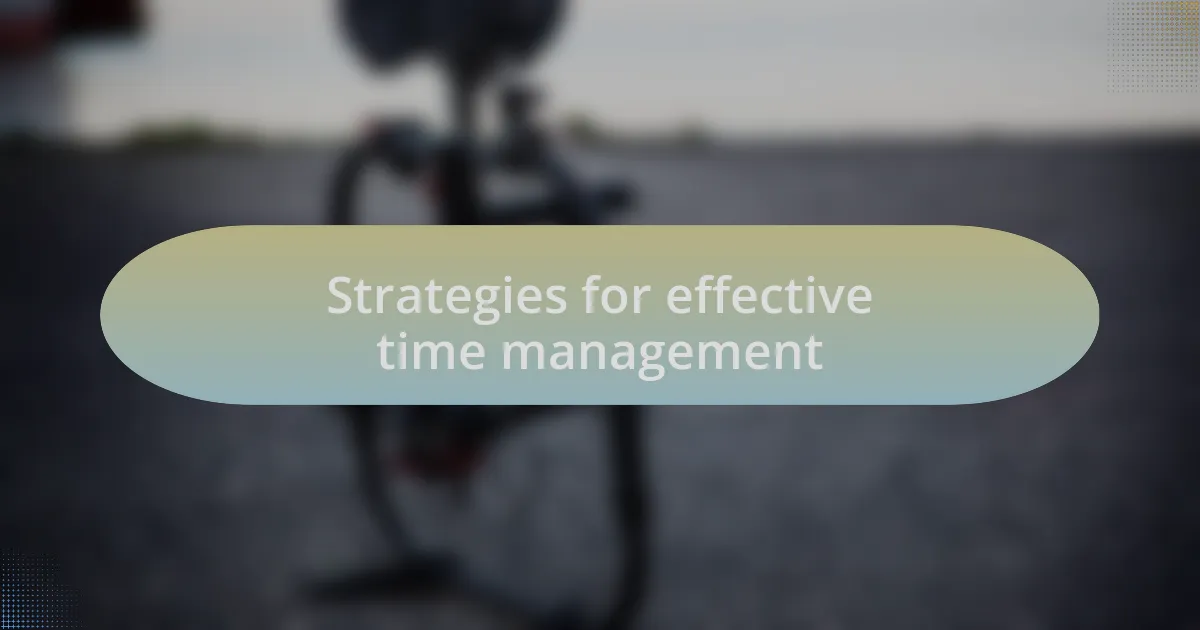
Strategies for effective time management
Effective time management is a game-changer in balancing personal and professional photography work. I remember when I first started, my days blurred together, filled with endless editing and client calls. It wasn’t until I began setting specific time blocks for each task that I noticed a significant turnaround. Have you ever tried scheduling your photography sessions as if they were appointments? I found that by sticking to a timetable, I could allocate dedicated time for both responsibilities and enjoy life’s little moments without guilt.
In my experience, prioritization plays an essential role in managing time effectively. I’ve learned to start each day by identifying my top three priorities. For instance, if I want to capture a stunning sunset portrait, I’ll make it my primary focus for the day. This approach ensures that I invest my energy where it counts, avoiding the chaos that arises from spreading myself too thin. What about you? Have you found a way to zero in on your top tasks to maximize your creative output?
Another invaluable strategy I’ve adopted is learning to say no. Initially, I had a hard time turning down gigs or social invitations, fearing I might miss out. However, I realized that saying yes to every opportunity diluted my passion and effectiveness. When I started being selective, I felt a weight lift off my shoulders. Instead of trying to juggle everything, I can now give my best self to only the projects that truly resonate with me. Trust me, it’s a liberating feeling to reclaim your time and focus on what genuinely inspires you.
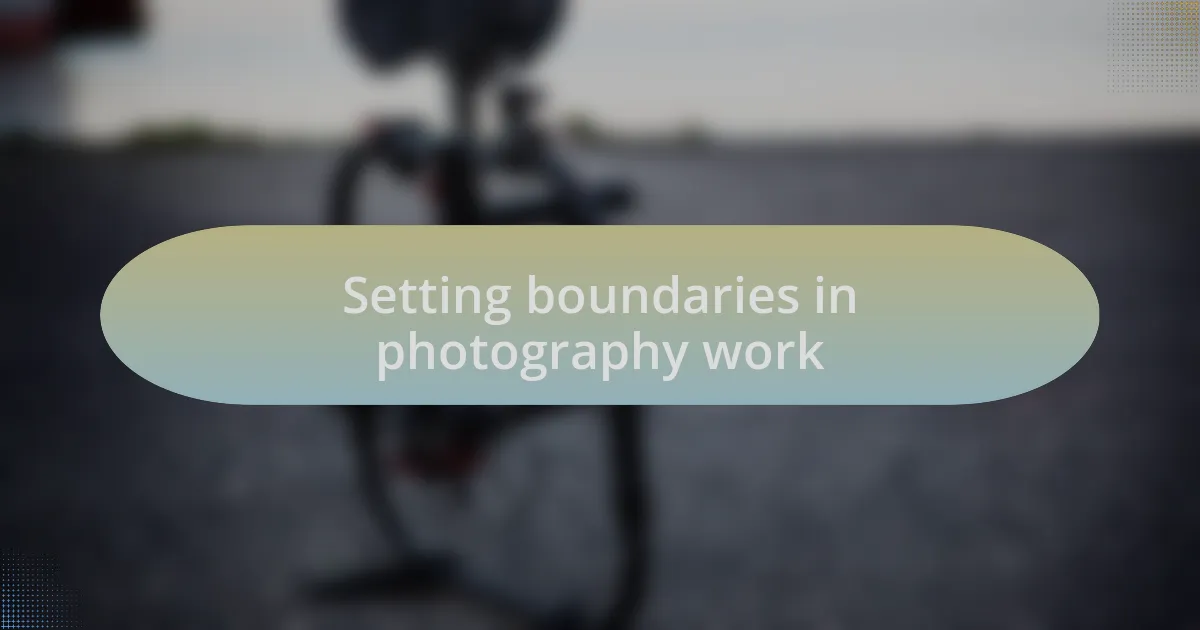
Setting boundaries in photography work
Setting boundaries in photography work is crucial to maintaining not just productivity but also sanity. Early in my career, I didn’t fully grasp the importance of saying no. I remember accepting multiple last-minute shoots only to find myself burned out and dreading my camera. Have you ever felt overwhelmed by too many commitments? Establishing clear limits on my availability helped me regain control and enjoy my craft again.
I’ve come to appreciate the value of communication in this process. When clients request a quick turnaround, I gently remind them of my standard timelines. This not only sets expectations but also reinforces my professionalism. I remember a time when a client was taken aback by my response, but after explaining my process, they understood and respected my boundaries. How often do we forget that clear communication can enhance client relationships?
Additionally, creating a dedicated workspace has been a game changer. I made a point to designate a specific area in my home as my photography office. This physical separation helps me switch off from work mode when I step away. Have you tried establishing your own creative zone? It’s a simple yet effective way to mentally draw the line between personal time and professional responsibilities, making it easier to focus on both without guilt.
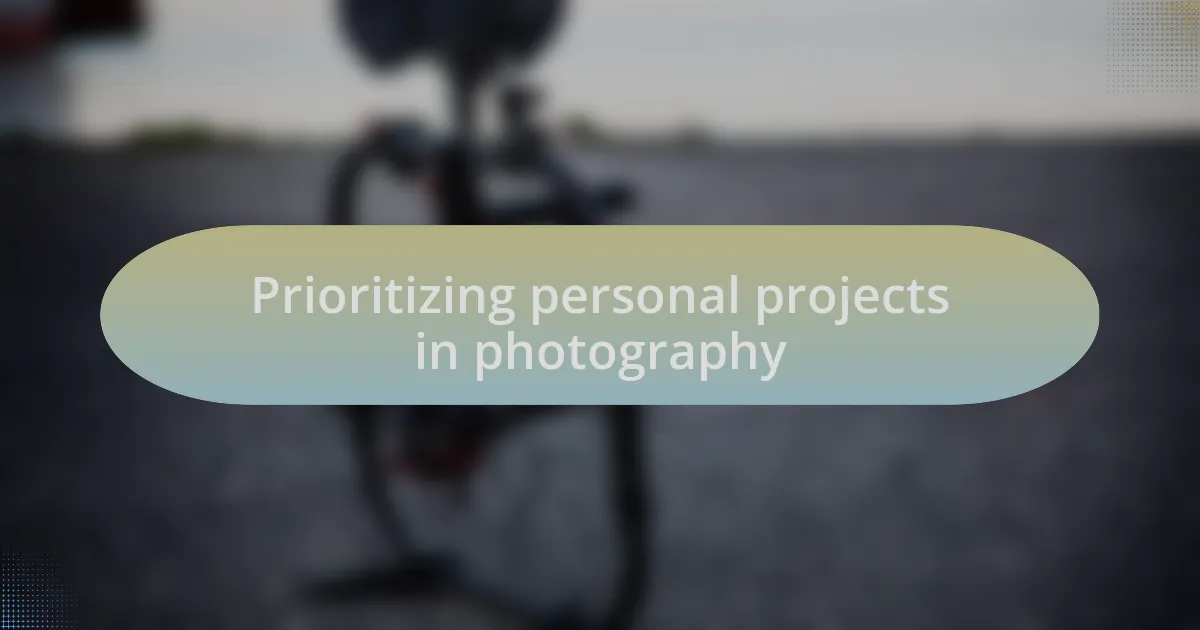
Prioritizing personal projects in photography
Focusing on personal projects in photography is something I’ve come to see as essential for my creative growth. I once dedicated a weekend purely to exploring street photography in my city, capturing the essence of everyday life through my lens. That experience reignited my passion and taught me the joy of creating without external pressures. Have you ever taken time just for yourself and noticed how invigorated it makes you feel?
I’ve learned to carve out time for these projects, even amidst a busy schedule. It’s not always easy, but I often treat these shoots as non-negotiable appointments on my calendar. During a particularly hectic month filled with client work, I blocked off just a few hours to focus on a personal landscape project. When I returned home, the satisfaction of having created something for myself was immeasurable. Doesn’t it make a difference when we pursue our own artistic interests?
Engaging in personal photography projects allows me to experiment freely with techniques and styles that I wouldn’t typically explore in client work. For instance, I once ventured into abstract photography, capturing shapes and colors in a way I had never tried before. This creative risk not only broadened my skills but also added depth to my portfolio. What would happen if you pushed the boundaries of your creativity in a personal project? I can assure you that the rewards are often well worth the effort.
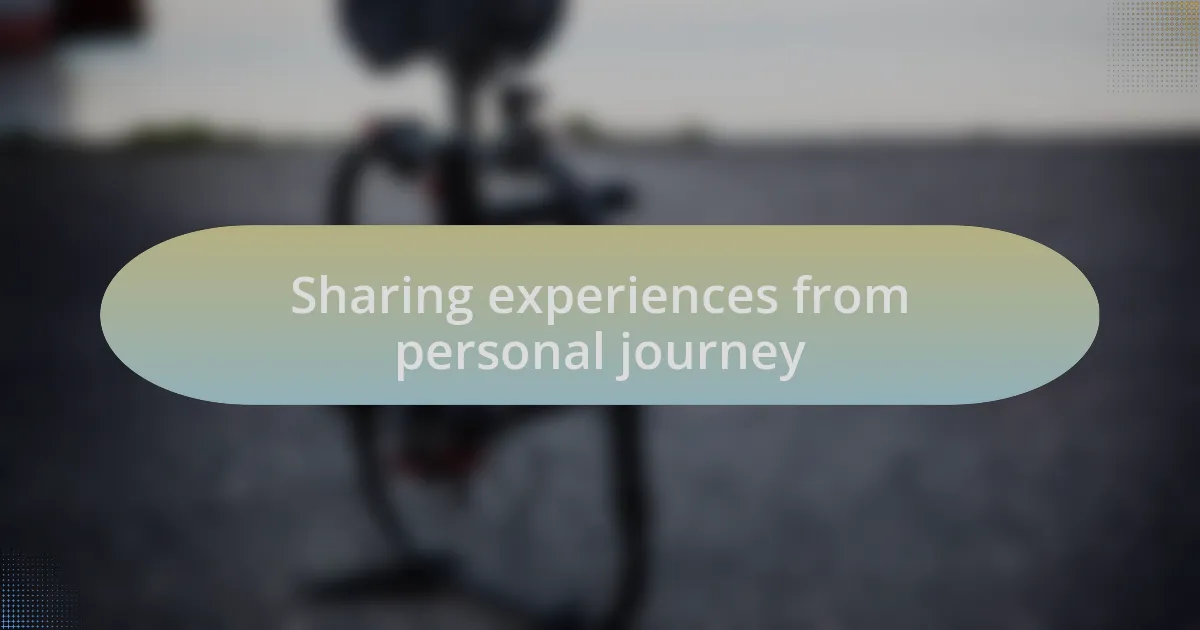
Sharing experiences from personal journey
Sharing experiences from my personal journey has been a transformative part of balancing my photography and life. I remember a particularly challenging time when I was juggling multiple client projects and felt burnt out. One Sunday, I decided to take my camera for a walk in a nearby park, searching for the magic in mundane moments. That day taught me that stepping away from the grind can lead to unexpected inspiration. How often do we forget to nurture our creativity amidst deadlines and expectations?
There was another occasion when I participated in a photography challenge with friends. Each week, we would assign a theme, and I found myself exploring subjects I had never considered before. One week focused on “shadows,” prompting me to look at light differently. This exploration not only deepened my understanding of photography but also strengthened my connection with peers. Have you ever collaborated with others on personal projects? It can reveal new perspectives and keep your passion alive.
It’s intriguing how sharing these experiences has fostered a sense of community among fellow photographers. I often find myself reflecting on past shoots during conversations, and these stories can spark fresh ideas and motivation. Like that time when I tried long-exposure photography at night—the thrill of seeing city lights transform into beautiful streaks was simply exhilarating. Sharing these personal journeys highlights the importance of creative exploration in our craft. What stories from your photography journey resonate with you?